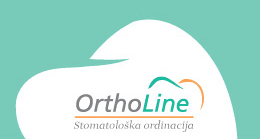Partial laminated prostheses are the oldest ones and the ones that have been used the most. They replace one or more lost teeth and their supporting structures (jaw bone and gums) by leaning on the rest of the teeth and their periphery.
Laminated prostheses cannot evenly transmit chewing pressure which can cause damaging of other natural teeth and jaw bone, reducing their long-life lenght. This is why fixed appliances (crowns and bridges), skeletal and valplast prostheses take more significant place in dental prosthetics.
Partial skeletal prosthesis –Veseel prosthesis is maximum reduced prosthesis whose base is metal skeleton. Technologically it’s more modern and biologically more acceptable than partial laminated prosthetics. Physiologically it fully transmits chewing force leaning on the rest of the natural teeth and jaw bone.
It is applicable to all kinds of toothlessness that are impossible to fix with fixed prosthetics or implants for any reason.

